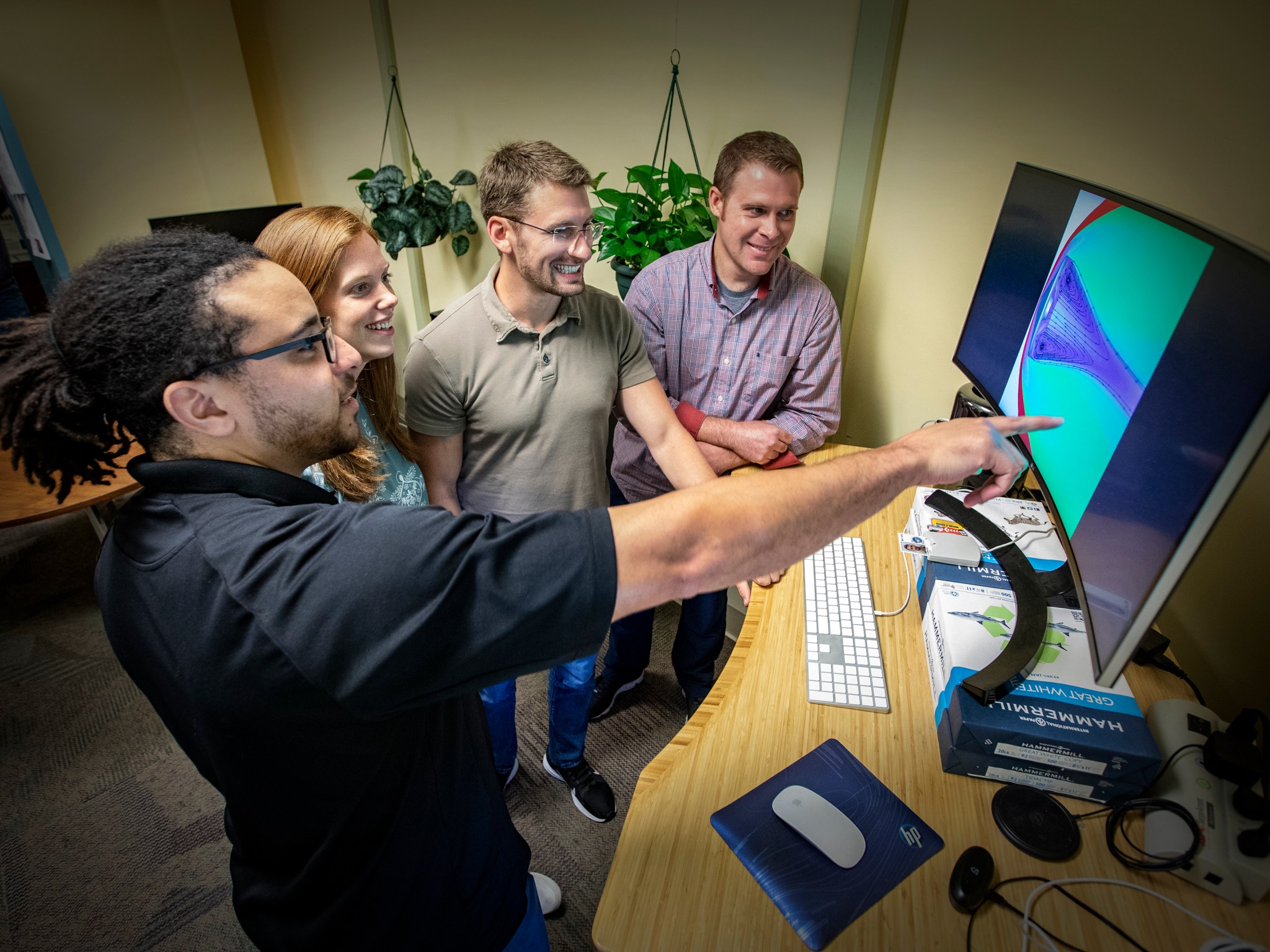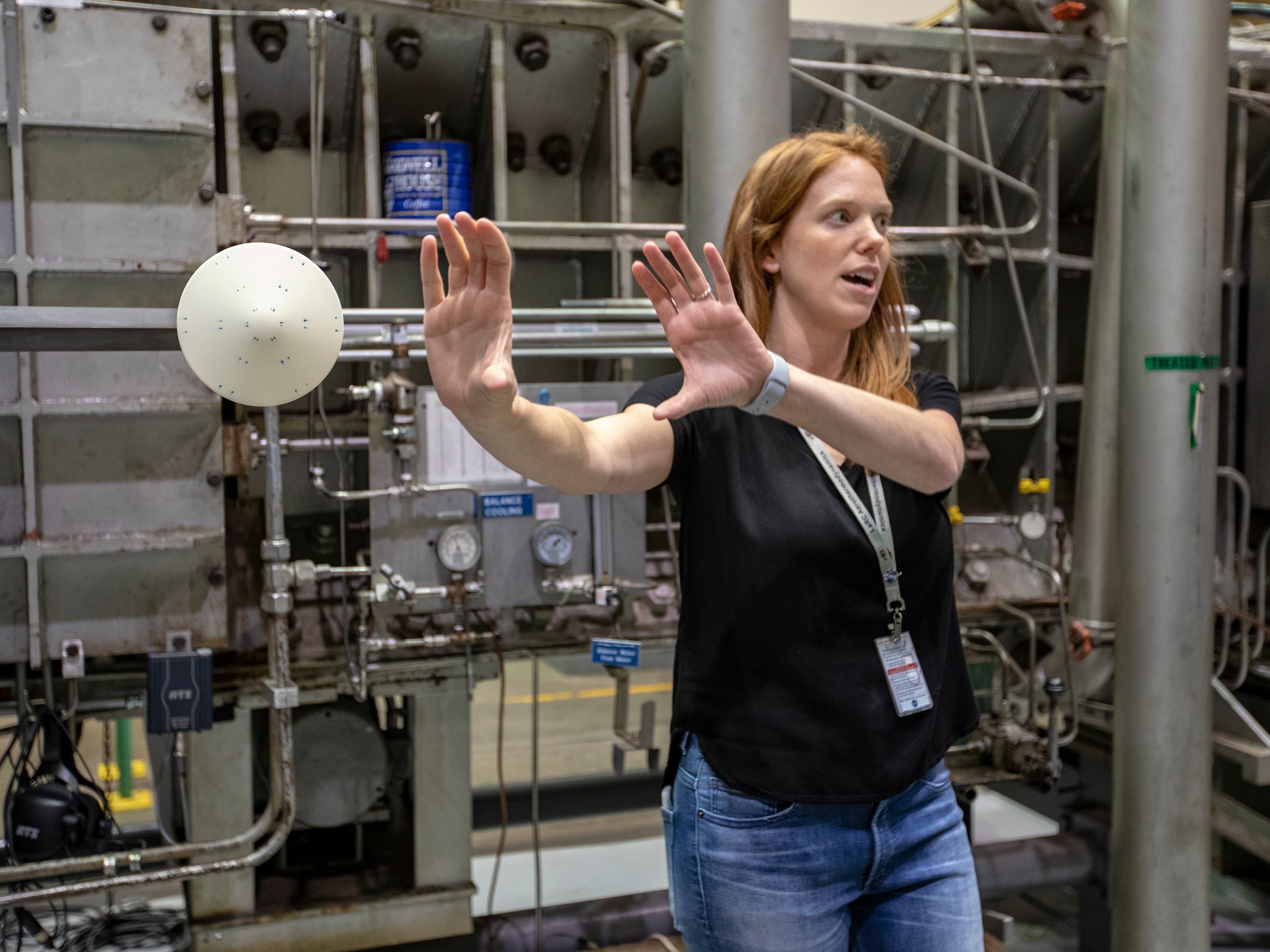For many Americans, the stereotypical astronaut is a young, risk-taking wild wo/man ambitiously tackling the physical and psychological rigors of training for the opportunity to blast off into deep space to explore uncharted territory.
On the other hand, the stereotypical researcher who develops the technology behind the mission is an older, pocket protected introvert in a lab coat.
Both stereotypes are outdated, but while there are still Apollo-era researchers at NASA’s Langley Research Center in Hampton, Virginia, contributing to missions such as the Artemis Program, many not long out of college are also having profound effects on important programs.
The Aerothermodynamics Branch of Langley’s Research Directorate turns 25 years old this week, and several early career team members not much older than the branch are conducting tests and running simulations on the Low-Earth Orbit Flight Test of an Inflatable Decelerator (LOFTID). It’s a crucial technology for atmospheric entry that could enable future crewed missions to Mars.
“I just finished a wind tunnel test where I measured heating on the aft body of the aeroshell,” said Beth Rieken, a research aerospace engineer hired in 2018. “Even though the heating is low on the aft body, it’s important to know what it is because there’s no thermal protection there.”
Adam Wise and Kyle Thompson, research aerospace technologists, are also testing LOFTID through computational fluid dynamics (CFD) computer simulations.
“We can’t accurately model the full-scale vehicle in the wind tunnel,” Wise said. “We make assumptions in the wind tunnel by necessity and compare the results with CFD.”
CFD applies conservation equations to the area surrounding the LOFTID shape, broken up into cubes or three-dimensional triangle shapes to understand how the air is behaving around the vehicle. The computer runs the equations many times within a single simulation to get them to agree.
“It a tug of war,” Thompson said. “All the triangles and cubes are tugging with equal weight on the environment around the simulator.”
CFD and wind tunnel testing are two elements of the aerothermodynamic triad used for designing something like LOFTID, explained Carey Scott, the newest full-time member of the Aerothermodynamics Branch. The third is actual flight test measurements.
“That’s a big part of what I do in SCIFLI,” he said. Carey has just begun his role as deputy principal investigator for the Scientifically Calibrated In-Flight Imagery team at Langley. Among other capabilities, SCIFLI is able to image heat signatures of the vehicles they test in flight. This could be vital data for something like LOFTID, which must be able to withstand the heat of entry into atmospheres, initially at very high speeds.
Scott said SCIFLI has proven its impact with other projects. In fact, the NASA Engineering Safety Center recently began a reinvestigation of the standards for parachute load distribution based on SCIFLI data.
“We showed that asymmetry during inflation can cause overloading on some lines based on how the parachutes open,” he said.
That stress on some lines has come dangerously close to causing parachute mishaps in the past.
While several of the Aerothermodynamics Branch’s five early career researchers are currently involved with LOFTID testing and simulation, one of the things they all say they appreciate about NASA is the ability to work on many different important projects at this stage of their careers.
“Working at NASA give me the opportunity to contribute to several different programs, external projects, and foundational research both as a participant and as a project investigator, even early in my career,” said Michelle Mason, a research aerospace engineer.
Scott agreed. “I have friends I went to school with who went into industry with commercial companies and it’s very compartmentalized. I get bored fast. I’ve seen and been involved with many unique projects and I don’t know if you can get that level of experience early on with another agency.”
Aside from the hands-on project experience available at NASA, the early career group was impressed with the people they get to work with every day.
“The wealth of knowledge is unparalleled,” Thompson said. “It’s unique to come to work here with people who were writing your college textbooks. It’s hard not to let your jaw hit the floor.”
Rieken said it’s been great to see how willing seasoned Langley researchers are to share their knowledge.
“People who have been here for decades are excited to mentor. It’s a fast-paced, exciting learning environment,” she said, adding that internships are the gateway for other young researchers who might like to work at NASA.
Carey agreed, and advised students to get as much research experience as possible early on in their education.
“Take the internships even if it doesn’t sound like exactly what you want,” he said.
“I’ll echo that,” said Thompson. “I didn’t have any interest in CFD when I first came here. I wanted to do jet propulsion. Keeping an open mind can change your life.”
He also said it takes a lot of hard work, dedication and commitment.
“It helps if you learn how to drink coffee.”
April Phillips
NASA Langley Research Center

























